
The Sagrada Familia, an iconic basilica designed by architect Antoni Gaudí, has captivated visitors for over a century with its intricate design and grand scale. As the construction continues, many are left wondering about the timeline for its completion and the vision behind its ambitious architecture.
In this article, we will explore the current status of the project, the challenges faced, and provide insights into the anticipated timeline. Join us as we delve into the question of Sagrada Familia Barcelona: When Will It Be Finished? and the significance of this monumental work in the landscape of architectural history.
Sagrada Familia Barcelona: Current Construction Status and Timeline
The Sagrada Familia remains one of the most ambitious architectural projects in the world, with its current construction status reflecting both progress and challenges. As of 2023, approximately 70% of the basilica is complete, with ongoing efforts to enhance both its structural integrity and artistic elements. The main towers are a focal point of the current work, particularly the central tower dedicated to Jesus Christ, which is expected to reach a height of 172.5 meters upon completion.
Several factors have influenced the timeline of the Sagrada Familia's construction, including:
- Funding constraints
- The complexity of Gaudí's original designs
- Impact of the COVID-19 pandemic
Despite these challenges, the project team remains optimistic. The current forecast suggests that the basilica may be completed by 2026, coinciding with the centenary of Gaudí's death. This timeline reflects a renewed commitment to finishing the basilica while preserving its artistic integrity.
In addition to the towers, significant work is underway on the facades, particularly the Glory Facade, which will serve as the main entrance upon completion. This aspect of the project aims to capture the intricate details and symbolism that characterize Gaudí's vision. The integration of modern technology has played a crucial role in facilitating this process, allowing for precision in the stonework and design elements.
Expected Completion Date of Sagrada Familia: What We Know So Far
The expected completion date of the Sagrada Familia has been a topic of interest for many years. As of now, the project is aiming for a completion date in 2026, which marks a significant milestone—the centenary of Antoni Gaudí's death. This timeline represents a blend of historical respect and a commitment to finishing one of the most intricate structures in architectural history.
Several key aspects highlight the ongoing progress and future plans for the basilica:
- The central tower dedicated to Jesus Christ is under construction and will be the tallest, reaching 172.5 meters.
- Work is actively progressing on the Glory Facade, which will be the main entrance, showcasing intricate details that reflect Gaudí's visionary design.
- Modern technology is being utilized to ensure precision in the stonework, enabling artisans to replicate Gaudí's complex forms accurately.
Despite the optimistic projections, the timeline may still face potential delays due to various factors. Historical challenges include funding issues and the complexity involved in adhering to Gaudí's original designs. Additionally, the impact of the COVID-19 pandemic has also caused unforeseen interruptions to the construction schedule.
In summary, while the goal of completing the Sagrada Familia by 2026 is ambitious, the dedication of the project team remains unwavering. As work progresses, the basilica continues to evolve, promising a final product that is not only a tribute to Gaudí but also a significant achievement in the world of architecture.
The Architectural Significance of Sagrada Familia in Barcelona
The Sagrada Familia stands as a testament to the innovative vision of Antoni Gaudí, showcasing a unique blend of Gothic and Art Nouveau styles. Its architectural significance lies not only in its striking aesthetics but also in its intricate symbolic elements that reflect Gaudí's deep religious faith. The basilica's design encapsulates the natural forms and structures found in nature, embodying a harmonious relationship between architecture and the environment.
One of the most remarkable aspects of the Sagrada Familia is its innovative use of geometry and structure. Gaudí employed hyperboloid shapes and catenary arches to enhance both the stability and the visual impact of the basilica. The following features highlight its architectural significance:
- Towers: Each of the 18 planned towers represents a different biblical figure, culminating in the tallest tower dedicated to Jesus Christ.
- Facades: The three facades—Nativity, Passion, and Glory—each convey distinct narratives and artistic expressions.
- Light and Space: The strategic placement of stained glass windows creates a dynamic interplay of light within the basilica, enhancing its spiritual atmosphere.
Incorporating modern construction technologies has also played a crucial role in the ongoing realization of Gaudí's vision. The use of computer modeling has allowed architects and artisans to interpret and implement Gaudí's complex designs with greater precision. This modern approach ensures that the architectural integrity of the Sagrada Familia is preserved while also keeping pace with contemporary building practices.
The Sagrada Familia's architectural significance extends beyond its physical structure; it serves as a cultural symbol for Barcelona and a beacon of innovation in the field of architecture. As it nears completion, the basilica not only pays homage to its creator but also continues to inspire future generations with its timeless beauty and groundbreaking design principles.
Exploring the History and Vision Behind Sagrada Familia
The Sagrada Familia is not merely a church; it represents a vision deeply rooted in the artistic and spiritual aspirations of its designer, Antoni Gaudí. Construction began in 1882, and Gaudí dedicated the last 15 years of his life exclusively to this project, infusing it with his innovative architectural philosophies and profound religious symbolism. His vision aimed to meld nature with spirituality, resulting in a structure that transcends traditional religious architecture.
Throughout its history, the Sagrada Familia has faced numerous challenges, from funding shortages to the complexities of Gaudí’s unique designs. Despite these hurdles, the basilica continues to evolve, driven by a commitment to honor Gaudí's original intentions. The collaborative efforts of architects, artisans, and craftsmen today reflect both respect for Gaudí's legacy and the integration of modern techniques to ensure the project remains faithful to his vision.
The basilica's design incorporates elements inspired by nature, which Gaudí believed was a direct expression of God’s creation. Notably, the use of geometrical forms and structural innovation demonstrates an understanding of natural laws. Key features of this architectural marvel include:
- Natural Shapes: Gaudí employed forms like hyperboloids and catenary arches, which enhance the stability and aesthetic appeal of the structure.
- Symbolism: Each design element serves a purpose, conveying stories from the Bible and the life of Christ, which resonates with visitors on a spiritual level.
- Integration with the Environment: The interplay of light and shadow within the basilica creates an ethereal atmosphere, inviting reflection and contemplation.
As we look forward to the completion of the Sagrada Familia, it stands as a beacon of creativity and dedication, embodying Gaudí's lifelong pursuit of a harmonious synthesis between architecture and the divine. This monumental project not only enriches Barcelona's skyline but also contributes to the global narrative of architectural innovation, inspiring future generations to explore the depths of creative vision.
Visitor Tips for Experiencing Sagrada Familia in 2023
When visiting the Sagrada Familia in 2023, it's essential to plan ahead to make the most of your experience. One of the best tips is to purchase your tickets online in advance to avoid long queues. This not only saves time but also guarantees your entry, especially during peak tourist seasons. Consider opting for guided tours that offer insights into Gaudí's visionary design and the symbolism embedded within the basilica.
Another great tip is to visit during off-peak hours. Early mornings or late afternoons typically see fewer crowds, allowing you to explore the basilica at a more leisurely pace. Additionally, the lighting during these times enhances the beauty of the stained glass windows, creating a captivating atmosphere. Don’t forget to check if there are special events or religious services happening during your visit, as these can provide a unique perspective on the site's significance.
While inside, take the time to appreciate the intricate details of Gaudí's work, from the towering columns that resemble trees to the stunning facades. To enhance your visit, consider using an audio guide or a mobile app that offers a deeper understanding of the basilica's architecture and history. Engaging with these resources can significantly enrich your experience, ensuring you leave with a greater appreciation for this architectural masterpiece.
Finally, be mindful of the guidelines and regulations within the basilica. Dress appropriately, as it is a place of worship, and follow the rules regarding photography to maintain the sanctity of the space. With these tips in hand, your visit to the Sagrada Familia will surely be a memorable highlight of your trip to Barcelona.
Future Plans for Sagrada Familia: What to Expect After Completion
As the Sagrada Familia approaches its anticipated completion, the future plans for this architectural marvel promise a continuation of Gaudí's visionary legacy. After the final stone is laid, the basilica is expected to become a major cultural hub, attracting visitors from around the globe. The integration of educational programs and guided tours will allow visitors to delve deeper into Gaudí’s innovative techniques and the rich symbolism embedded in every detail of the structure.
In addition to its architectural significance, the Sagrada Familia is set to enhance its role as a spiritual center. Future plans include:
- Regular religious services and community events that invite local participation.
- Art exhibitions that explore themes of spirituality and creativity, encouraging dialogue among diverse audiences.
- Workshops focused on craftsmanship and design, aiming to inspire future architects and artists.
Furthermore, the surrounding areas of the Sagrada Familia will see improvements aimed at enhancing visitor experience. These plans include:
- Expanded green spaces for relaxation and enjoyment.
- Improved accessibility for visitors of all ages and abilities.
- Cafés and shops that reflect local culture, providing a space for visitors to gather and reflect.
Overall, the completion of the Sagrada Familia heralds not just an architectural milestone, but a transformation of the site into a vibrant cultural and spiritual destination that honors Gaudí’s original vision while adapting to contemporary needs.
 The Ultimate Guide to Sagrada Familia: Barcelona's Official Website
The Ultimate Guide to Sagrada Familia: Barcelona's Official Website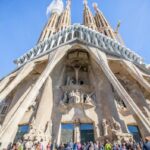 Discover the Majestic Sagrada Familia on a Barcelona Walking Tour
Discover the Majestic Sagrada Familia on a Barcelona Walking Tour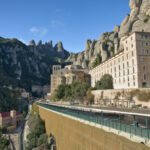 Barcelona to Montserrat Monastery: Exploring the Scenic Distance
Barcelona to Montserrat Monastery: Exploring the Scenic DistanceIf you want to know other articles similar to Sagrada Familia Barcelona: When Will It Be Finished? you can visit the category WHERE YOU CAN GO.
Leave a Reply


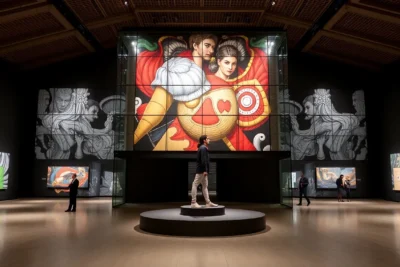
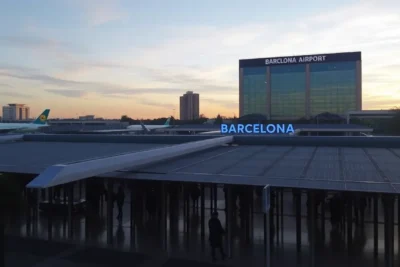

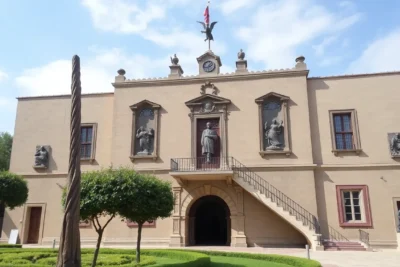

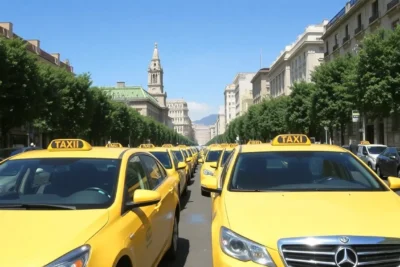
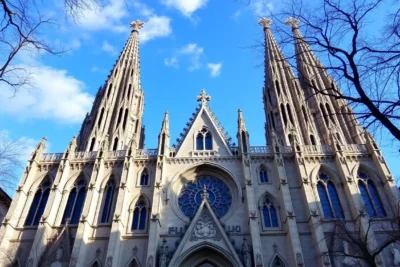

Read more!